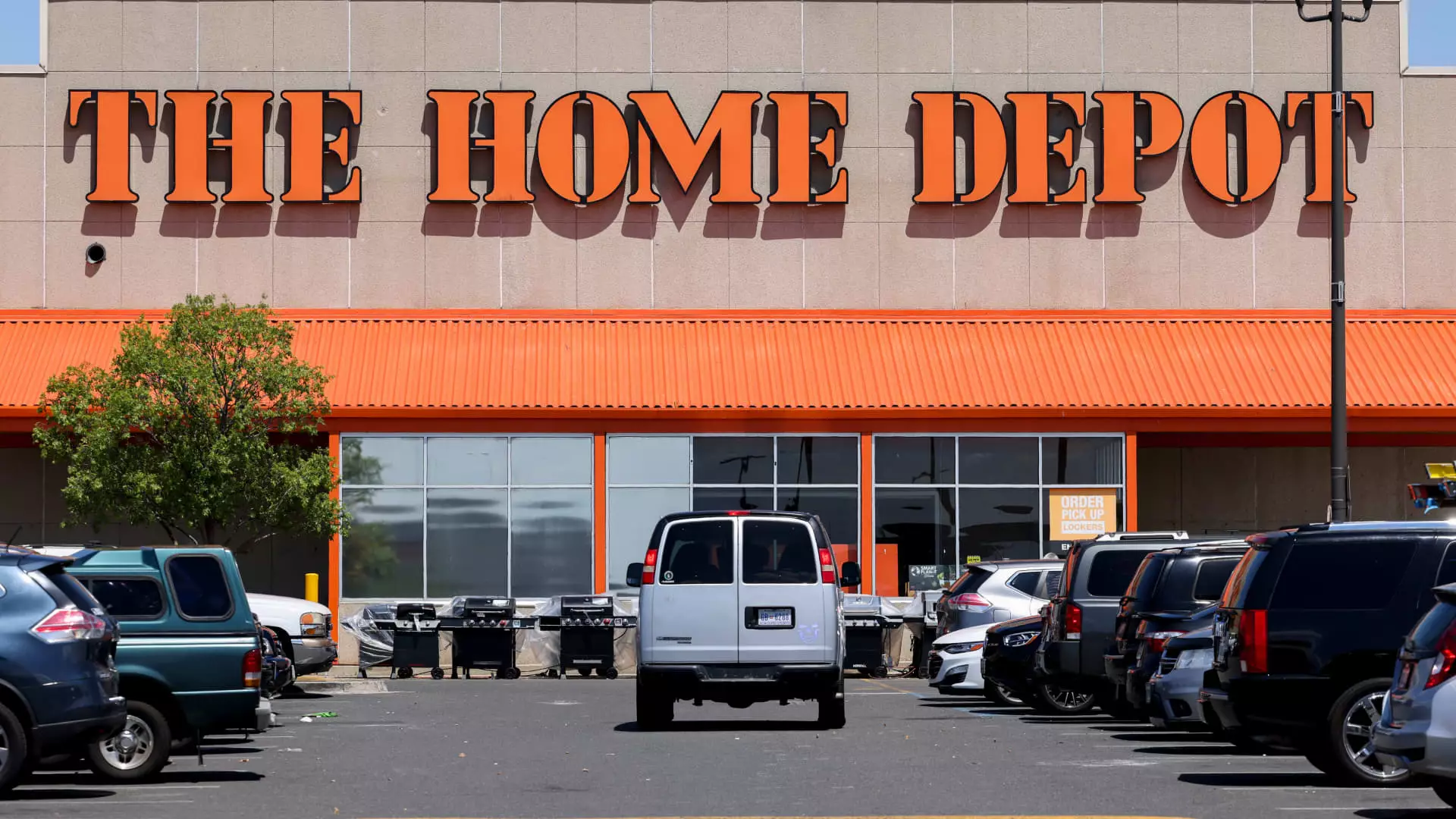Home improvement giant Home Depot faced a tumultuous 2024 characterized by significant interest rate fluctuations and a wary consumer base. As the year unfolded, however, the company showcased a remarkable ability to adapt, revealing clear indicators that bode well for its performance in 2025. With a combination of strategic acquisitions, market positioning, and housing dynamics, Home Depot is gearing up for a resurgence driven by both recovery in housing turnover and a backlog of consumer demand.
The year 2024 began on a challenging note for Home Depot as elevated borrowing costs dampened consumer enthusiasm for high-ticket home improvement projects. The initial months saw the stock struggle, as financing homes and renovations became more expensive for consumers. However, the tide started to turn around mid-March when Federal Reserve signals hinted at potential rate cuts. This sparked a renewed optimism among investors, causing stock prices to rise.
Yet, the optimism was short-lived, as expectations recalibrated in May. The real game-changer arrived in September, with the Fed’s decision to ease monetary policy through significant rate cuts. This pivotal moment, set against the backdrop of housing turnover hitting a historical low, ignited a rally for Home Depot’s stock. By late November, the company had achieved an all-time intraday high, bolstered by the market’s renewed confidence in the potential for a functioning housing market.
Looking ahead, signs point to a gradual recovery for Home Depot in 2025. The third-quarter financial results from late 2024 suggested that the company had begun to stabilize, with the potential for positive growth on the horizon. The forecast for housing turnover indicates that as mortgage rates drop and consumer confidence returns, more people will be inclined to tackle home improvement projects. With stocks in this sector typically benefiting from declining interest rates, Home Depot could see a significant uptick in comparable sales.
Moreover, anticipated additional rate cuts from the Fed in 2025 position Home Depot favorably within an evolving housing landscape. With limited new home construction projected, demand for older homes—which often require upgrades—essentially becomes a boon for a retailer known for its extensive inventory of home improvement supplies. This dynamic indicates a shift towards renovation and remodeling, areas where Home Depot has established a robust market presence.
One of the distinct advantages that Home Depot holds over competitors like Lowe’s is its enhanced focus on the professional contractor market. This strategic positioning has been solidified through recent acquisitions, such as SRS Distribution, which broadens its reach within the contractor community. By catering to professionals who frequently need bulk supplies, Home Depot reinforces its status as an industry leader poised to benefit from increased activity within the renovation sector.
Furthermore, the geographical sourcing of Home Depot’s products alleviates some potential tariff impacts from external markets, as a significant portion of its inventory is sourced domestically. This fortifies the company against some international fluctuations that might otherwise affect pricing and availability.
Despite these positive indicators, challenges loom on the horizon. A potential increase in long-term bond yields remains a necessary factor to monitor, as these rates have a direct influence on mortgage pricing. Should bond yields continue to rise, the timeline for recovery in housing formation and Home Depot’s stack in big-ticket projects could be delayed.
Additionally, geopolitical factors and supply chain issues associated with its international operations may still pose a risk. A dependence on products sourced from countries like Mexico, Canada, and China could expose Home Depot to market fluctuations and regulatory changes.
Home Depot, while navigating the immediate hurdles of 2024, is strategically positioning itself for an upward trajectory in 2025. The potential for recovering housing markets, coupled with a growing consumer appetite for home improvement, sets a promising stage for the company’s growth. While uncertainties remain, Home Depot’s resourceful adaptations and its deep-rooted presence in the market reinforce its status as a resilient player in the home improvement sector. Investors and consumers alike can watch closely as the brand looks to harness emerging trends in the evolving economy.

